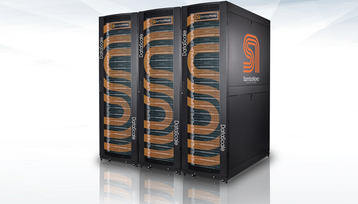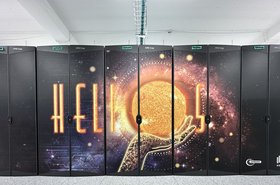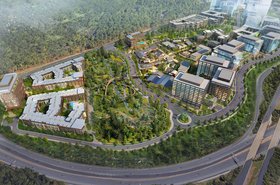The US Department of Energy’s (DOE) Los Alamos National Laboratory (LANL) is to expand its use of SambaNova Systems’ AI hardware.
SambaNova said LANL is adopting the SambaNova Suite and expand its existing DataScale deployment to run AI workloads, including generative AI and large language model (LLM) technologies.
“Los Alamos is investing in Generative AI to advance a broad spectrum of national security missions,” said Jason Pruet, director of the National Security AI Office for Los Alamos National Laboratory.
"At the dawn of the exascale supercomputing era, we are increasingly relying on AI to be part of the ASC computing ecosystem to support our mission objectives now and in the coming years," said NNSA ASC program director, Thuc Hoang.
"We are pleased to be scaling up our existing deployment of SambaNova’s Systems to advance generative AI and LLM technologies to contribute to the ASC program."
Details of the multi-year deal weren’t shared, but SambaNova confirmed it to be an expansion of a current partnership.
Marshall Choy, SVP of product at SambaNova Systems, said: “The partnership showcases SambaNova’s performance advantage over GPU-based systems on the most challenging foundation model and deep learning workloads.
"This means more experiments and more discoveries that accelerate and impact national initiatives."
Based in Santa Fe, New Mexico, LANL was set up in the 1940s as a key site during the Manhattan Project to develop nuclear weapons. Today, the site is home to a number of supercomputers, including the recently installed Crossroads system.
Founded in 2017, San Francisco-based SambaNova has raised more than $1 billion from investors including Google Ventures, Intel, SoftBank, and Singaporean wealth fund GIC. Co-founder Christopher Ré previously founded data company Lattice, which was acquired by Apple in 2017.
SambaNova pitches its Suite as an on-prem or cloud-based offering to allow companies to train their own generative AI models based on popular foundation models.
In June, consulting giant Accenture deployed a three-rack Suite at its data center for generative AI work. The DOE's Argonne National Laboratory is also a customer.
Each DataScale SN30 42U cabinet can contain up to three DataScale SN30-8 systems, each with eight Cardinal SN30TM RDUs and 8TB total memory. The company recently launched the new SN40L processor.
In other supercomputing news:
- Cerebras has completed work on its Condor Galaxy 1 (CG-1) AI supercomputer. The system offers four exaflops at FP16 – having launched with two exaflops earlier this year at Colovore’s facility in Santa Clara, California.
The AI chip company is developing nine supercomputers in partnership with Saudi firm G42. The company said construction of CG-2 has commenced and the company is on track to complete the full 36 AI exaflops Condor Galaxy system with G42 in 2024.
- Finnish quantum firm IQM recently announced two quantum computers. The IQM Radiance comes in two variants: 54 qubits, target for availability is Q3 2024, and 150 qubits, targeted from Q1 2025.
- French quantum computing company Quandela has raised €50 million ($53.5m) in funding and delivered its first quantum computing machine, called MosiaQ to OVHcloud. The company has started the production of three additional machines scheduled for delivery in 2024.







